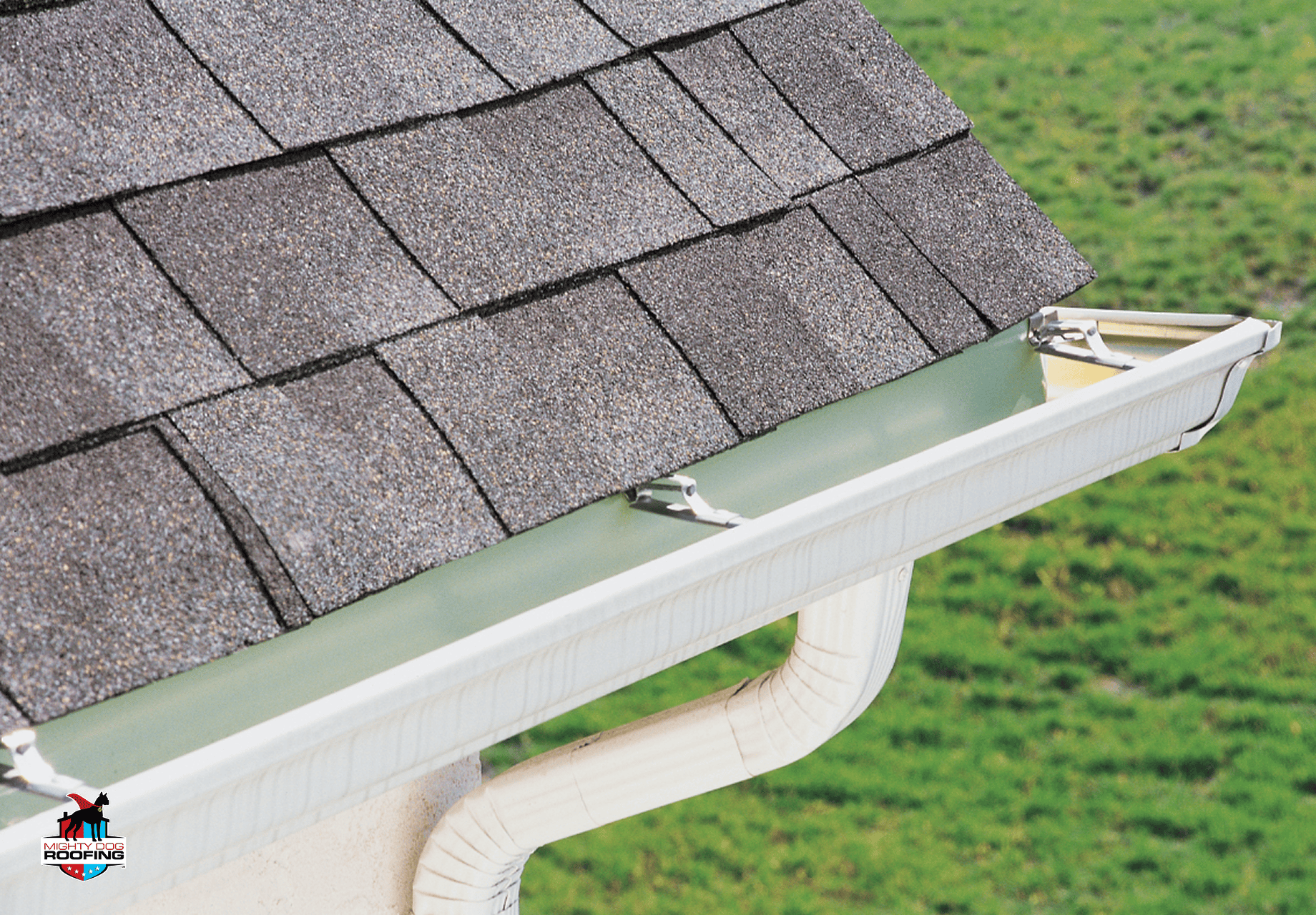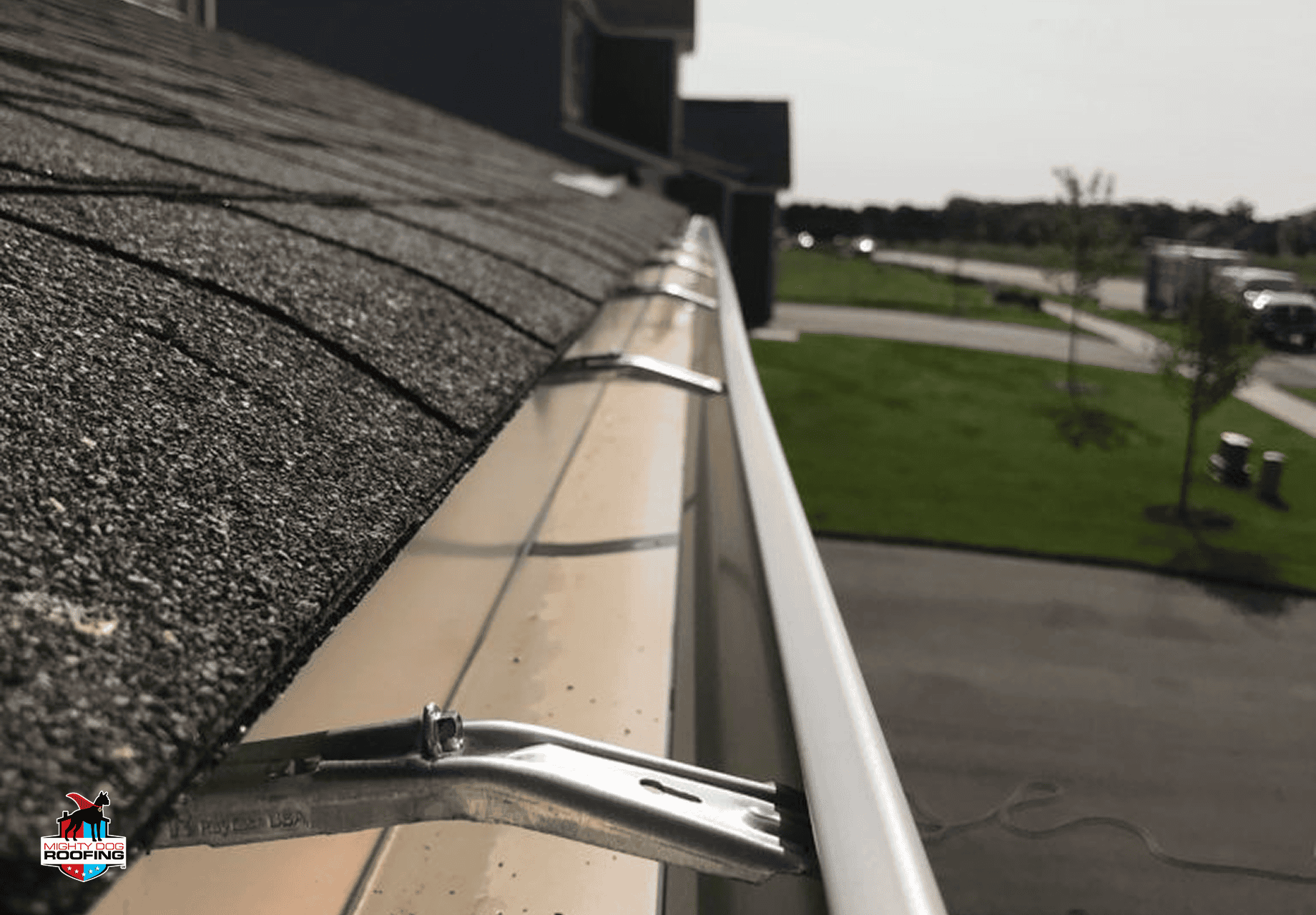Many homeowners invest considerable resources in premium drainage systems only to witness them fail during even moderate rainfall events. The underlying issue? Inappropriate dimensions were selected for their specific roof configuration and regional weather patterns. Selecting the proper gutter size is fundamental for effective water management, yet numerous property owners lack understanding about how to measure gutter size or assess their particular requirements. At Mighty Dog Roofing, we've observed firsthand how this widespread oversight frequently leads to substantial complications that could have been avoided through appropriate selection.
Understanding Standard Gutter Size Options
Determining what is the standard gutter size plays a critical role in ensuring effective moisture control and structural protection. Familiarizing yourself with available configurations helps property owners make educated decisions aligned with their home's specific needs.

Common Residential Gutter Dimensions
When exploring water management solutions, you'll commonly find options between 5-inch and 6-inch systems. These measurements indicate the opening width, which directly influences water-carrying potential. This seemingly minor one-inch variation actually delivers a remarkable 40% increase in capacity between these standard configurations. Throughout Pennsylvania, regional construction regulations frequently establish minimum requirements based on local precipitation patterns and typical architectural designs.
Specialty and Commercial Sizes
For residences with expansive roof surfaces or distinctive drainage challenges, enhanced 7-inch and 8-inch systems provide superior capacity. These larger-scale options blend harmoniously with residential architecture while managing substantially greater water volumes. At Mighty Dog Roofing, we additionally provide custom-designed solutions for heritage properties or homes featuring unique architectural elements where conventional sizes prove inadequate.
How to Calculate Gutter Size: Step-by-Step Process
Establishing ideal drainage dimensions necessitates a systematic approach founded on property-specific characteristics. Follow this methodology to ensure your assessments yield appropriately sized systems that effectively safeguard your residence.
Measuring Your Roof Area
Determining proper drainage requirements begins with the precise calculation of your roof's collection area. Measure the length and width of each roof section from ground level, then multiply these figures to determine the square footage. For multi-faceted roofs with various sections, calculate individual areas separately before combining them.
Remember that roof slope significantly influences water runoff velocity. More pronounced inclines direct precipitation downward with greater speed, potentially necessitating expanded drainage channels even with modest surface area. For accurate measurements, particularly on complex or steep roofing structures, Mighty Dog Roofing delivers professional evaluation services ensuring precision while maintaining safety protocols.
Rainfall Intensity Calculations
Pennsylvania's diverse climate creates significant variation in precipitation intensity across different regions. Review local meteorological data through resources such as the National Weather Service to identify peak rainfall statistics for your specific locality. For Greater Chadds Ford residents, we suggest planning for capacity that accommodates 1.5 inches of precipitation hourly during summer storm events. This strategy ensures your drainage capacity corresponds with actual environmental conditions, preventing overflow even during intense downpours.
Using Gutter Size Calculator Tools
Various online gutter size calculator resources can assist in estimating requirements by entering roof measurements, slope, and local precipitation data. While these digital tools provide valuable preliminary guidance, they might not account for distinctive architectural features or microclimate variations. The most dependable approach combines calculator results with expert assessment from seasoned installers who comprehend Pennsylvania's unique environmental challenges.
5 Inch vs 6 Inch Gutters
When evaluating these two configurations, water management capability represents the principal consideration. The 6-inch option manages approximately 40% greater water volume, making it particularly suitable for larger properties or homes surrounded by mature foliage that generates debris. While 5-inch systems remain the predominant residential selection, preference for 6-inch alternatives continues expanding as extreme weather incidents become increasingly common.
Comparing 5-Inch vs. 6-Inch Gutter Systems:
Feature | 5-Inch Gutters | 6-Inch Gutters |
Water Capacity | 1.2 gallons per 10 feet | 2.0 gallons per 10 feet |
Best For | Small to medium homes | Larger homes, steep roofs |
Material Cost | Lower initial investment | 15-20% higher cost |
Downspout Compatibility | 2x3 inch downspouts | 3x4 inch downspouts |
Visual Profile | Less noticeable, subtle | More prominent on fascia |
The cost difference between these options remains relatively modest compared to the significant performance advantages the larger dimension provides, especially for Pennsylvania residences experiencing both intense summer storms and winter snowmelt challenges.
Downspout Sizing: Coordinating Your Complete System
Understanding how to measure gutter downspout size is equally essential to your drainage system's effectiveness. Standard 5-inch channels typically work with 2×3-inch downspouts, while 6-inch systems require 3×4-inch downspouts to avoid flow restrictions. For most properties, we advocate installing one downspout for every 20-40 feet of drainage run, depending on precipitation intensity and roof dimensions. When determining downspout requirements, remember that strategic placement is as important as quantity.
Essential Downspout Placement Considerations:
- Position downspouts at corners and ends of drainage runs.
- Add extra downspouts in valleys where water flow concentrates.
- Direct downspouts away from the foundation using extensions or underground drainage.
- Consider aesthetic placement that complements architectural features.
At Mighty Dog Roofing, we evaluate your entire drainage configuration comprehensively, ensuring all components function together efficiently. This thorough approach prevents frequent issues like overflowing sections, ice dams, and foundation damage that commonly result from mismatched component dimensions.
Special Considerations for Gutter Capacity Planning
Beyond fundamental calculations, several factors influence optimal drainage planning for Pennsylvania homes. These include nearby tree coverage, dominant wind patterns during storms, and architectural elements like dormers or multiple roof planes creating concentrated water flow points. Winter conditions introduce additional challenges, as ice and snow accumulation demand structurally sound systems capable of supporting significant weight while maintaining proper drainage functionality. Once you've determined the right size, get cost estimates using our gutter installation cost guide.
Professional vs DIY Gutter Sizing Assessment
While DIY calculations prove adequate for straightforward, uncomplicated roofs, professional evaluation becomes invaluable for residences with complex architecture or unique drainage challenges. Experienced installers contribute specialized knowledge regarding local weather patterns, building code requirements, and how architectural features affect water flow dynamics – insights that online calculators cannot provide.
When to Choose Professional Sizing Assessment:
- Homes with complex roof designs or multiple levels.
- Properties experiencing current drainage issues or water damage.
- Historic homes requiring specialized solutions.
- Areas with extreme weather patterns or microclimate variations.
- When coordinating drainage with roof replacement or home renovations.
The reasonable cost of professional assessment from Mighty Dog Roofing yields returns through appropriately sized systems that prevent expensive water damage while maximizing longevity of both drainage components and your home's structural elements.

Common Gutter Sizing Mistakes to Avoid
Many homeowners underestimate their drainage requirements by focusing exclusively on roof square footage while disregarding crucial factors like pitch, valley concentration, and local rainfall intensity. Another frequent mistake involves selecting systems primarily based on appearance or cost rather than functional needs. Remember that undersized drainage creates persistent problems far outweighing any initial savings, while proper gutter size systems protect your investment for decades.
Expert Gutter Sizing and Installation in Greater Chadds Ford
Mighty Dog Roofing specializes in precise rain gutter sizing guide application for Greater Chadds Ford homes, incorporating Pennsylvania's distinctive weather patterns and architectural styles. Our comprehensive evaluation process ensures your drainage system delivers optimal protection against moisture damage while enhancing your home's visual appeal. We take pride in matching flow capacity precisely to your property's specific requirements.
Selecting appropriate dimensions safeguards your residence while providing years of dependable performance. Though how you measure gutter size involves technical calculations, professional guidance guarantees optimal results, balancing functional requirements with aesthetic preferences. Remember that proper selection constitutes a modest investment, preventing costly water damage and foundation issues for years ahead.
Get the right protection for your home. Contact Mighty Dog Roofing of Greater Chadds Ford today for a professional assessment and expert installation. Our experienced team will ensure your drainage system provides optimal capacity and performance for your home's specific needs. Call now for accurate sizing and reliable installation services.


